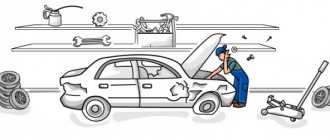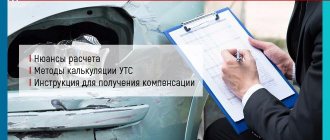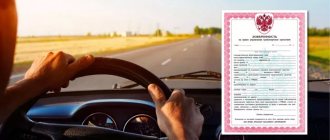What is a car's VIN?
VIN is an alphanumeric combination that includes:
- WMI (from the English World Manufacturers Identification) is a 3-digit generally accepted manufacturer index (country).
- VDS (from the English Vehicle Description Section) is a characteristic of a car, consisting of 6 characters: vehicle make, model, year of manufacture, factory code.
- VIS (translated from English Vehicle Identification Section) – 8-digit sequence: manufacturer’s index, serial number.
VIN first began to be used in 1977 after the adoption of appropriate vehicle identification standards in the USA and Canada. This certification method became widespread in 1980. Since then, VINs have been used everywhere in all car-producing countries. Until that time, manufacturers used their own designations, which made it difficult to identify the vehicle.
VIN number on the vehicle registration certificate
The VIN uses only those Latin letters that do not look like numbers. It is not allowed to use O, Q, I, since there are external similarities with 0 and 1. According to car production standards, manufacturers cannot reuse VIN for 30 years. International ISO standards are used to generate ciphers; according to this method, each code is unique. The VIN is applied by the enterprise that ships ready-to-sell cars to dealerships. The height of signs applied to the body and frame should be 7 mm, for other places - 4 mm.
How to find out where the car was assembled?
Having a personal vehicle today does not surprise anyone. Almost every third resident of our country has a car. When purchasing a vehicle, every buyer wants to know as much information as possible about it. Many people are interested in the main question: how to find out where the car was assembled? After all, the service life of the car and the comfort of the driver and passengers during trips will directly depend on this. Nowadays, it is very easy to determine the manufacturer of a particular car. All you need to do is know the VIN code of your vehicle. Every potential buyer or owner has the opportunity to obtain one or another information about a new or used car. You must have with you:
- TP of the vehicle
- your car registration certificate
- the car itself.
You can find out the VIN data - the code of a specific make and model of a car from the Technical Data Sheet in the column “Body No.” or the Certificate of Ownership. There you will see a 17-digit number, which consists of numbers and symbols, thanks to which the owner will be able to fully read all the necessary data about the transport.
The same combination can be used when searching and selecting the necessary parts for your car. To make it easier to search for data about the country of origin of the car, you need to decipher the encoding. To do this, divide it according to world standards into three components:
They contain the most important information about transport. By the first three characters on the left, you can determine the car manufacturer:
- the first digit is the geographic area
- the second digit is the sign of the country of this zone
- the third digit is the specific vehicle manufacturer.
Now, when you are asked how to determine where the car was assembled, you can answer this question.
What does VIN stand for?
Decoding the VIN code of the car
The first 3-digit set of characters VIN is an alphanumeric code, each element has its own meaning. First, the territorial location of the country relative to the part of the world, the country, and the vehicle manufacturer are indicated. The territorial zone, and there are six of them, is indicated by a number or letter. It looks like this:
- A to H corresponds to Africa;
- J – R – Asia;
- from S to Z – Europe;
- 1-5 – North America;
- 6.7 – Oceania;
- 8.9 – South America.
- if a manufacturer produces less than 500 cars per year, then the 3rd character of the sequence is designated by the number “9”.
The next 6 characters contain a description of the vehicle parameters. The parameters specified by the specific manufacturer are indicated.
Decoding the VIN number. The first 3 digits are the manufacturer code, the next 6 are the vehicle parameters.
For example, the VIN of cars manufactured in the USA must indicate the gross vehicle weight and its safety class. The last element of the sequence is designated by a number from 0 to 9 or the letter “X” and indicates the authenticity of the INTS. With its help, you can determine whether there were illegal code adjustments by independently changing the symbols. It is mandatory for North American and Chinese manufacturers; in the European market it is a recommendation. For the following list of manufacturers the indicator is mandatory:
- BMW;
- LEXUS;
- MERCEDES BENZ;
- SAAB;
- VOLVO;
- TOYOTA (from 2004 to the present).
In the VIN, the 4 outer elements are designated by numbers. As a rule, the first number in VIS corresponds to the year of manufacture of a particular vehicle model, the second - to the manufacturer. These items do not have to be specified and are guidelines.
The model year for each period is indicated differently. On cars manufactured before 2000 - in Latin letters, from 2001 to 2009 - in numbers from 0 to 9, from 2010 - again in letter format. From 12 to 17, the serial number is indicated in the VIN.
Vehicle model year by VIN number
For the user of a conventional vehicle, these values are of no value. However, for owners of vintage cars, as well as those from the premium segment, elements of consistency are very important. The fewer similar vehicles, the higher the cost of movable property.
Decoding the encoding
If you want to buy a quality car from a specific manufacturer, you can find out everything about it at the dealership or find out this fact yourself. The first three digits of the VIN - the code of the vehicle you are purchasing - will help you with this.
And so, the first sign indicates the state in which the car was assembled, and off we go:
- 2 - Canada
- 1,4,5 - USA
- 9 - Brazil
- 3 - Mexico
- J - Japan
- K - Korea
- Z - Italy
- V - Spain
- W - Germany
- S - England
- Y - Sweden.
The second symbol hides the car brand:
- 1 - Chevrolet
- 2&5 — Pontiac
- 3 - Oldsmobile
- 4 - Buick
- 6 - Cadillac
- 7 - GM Canada
- 8 - Saturn
- A - Audi, Land Rover, Jaguar
- D - Dodge
- L - Lincoln
- N - Infiniti, Nissan
- O - Opel
- T – Toyota, Lexus
- N - Honda, Acura
- F - Ferrari, Ford, Subaru, Fiat
- M - Mitsubishi, Hyundai, Skoda, Mercury
- A - Mitsubishi (USA)
- V - Volvo, Volkswagen
- D - Mercedes-Benz
- B - BMW
- S - Suzuki, Isuzu
- G - General Motors
- C - Chrysler.
By the third sign you can find out about the type of car. The vehicle description is under 2,4,5,6,7,8 and 9 characters. From all these numbers and symbols, every buyer or vehicle owner will be able to find out information about the engine type, body series and car model. From the tenth to the seventeenth character you can find out not only where the car was assembled, but also its technical characteristics and year of manufacture. For example, the symbol A means that the car was produced in 1980 (B - 1981, C - 1983, E - 1984, etc.)
Where is the car's VIN?
The VIN can be found in several places on the vehicle. It all depends on the manufacturer. For vehicles manufactured in the USA, the code is placed under the windshield. It's easy to spot without having to open the hood. The VIN is also applied to the body part, a special metal plate under the hood of the car, on the threshold and on the side of the side door.
Location of VIN numbers on a car (example)
In domestically produced cars, the code is indicated on the partition between the passenger compartment and the engine on the passenger side or on the shock absorber strut on the right. This is due to the need to protect movable property from theft and theft. Only vehicle manufacturers know the exact location of the VIN. The average person learns such information after the car is repaired or during disassembly.
Only vehicle manufacturers know the exact location of VIN numbers on cars.
To reduce the risk of forgery, the code is applied through laser burning of symbols or embossing. If there is not enough space, the VIN can be printed in two rows. The main thing is that there should be no spaces between characters of the same group.
Minted VIN number
Instructions for verification
When inspecting a car, a potential buyer can ask for documents for the vehicle and see the VIN code. If this is not possible, then look for a sign under the hood, bumper, or on the transverse frame. VIN consists of an alphanumeric sequence (letters are Latin, numbers are Arabic). The symbols I, O, Q, U, Z are not used in creating the code, since their spelling is similar to numbers. To determine the year in which the vehicle left the assembly line, you need to:
Cars produced in 2001-2009 have a corresponding digital designation. For example, a car manufactured in 2001 has the number 1 in the tenth position of the code; for a 2002 car - number 2, etc. From 1980 to 2000, markings were based on the Latin alphabet, excluding symbols similar to numbers. For example, if a car was produced in 1980, then the letter A is in the tenth place of the VIN code; for vehicles manufactured in 1981 - the letter B, etc. Starting from 2010, the alphabetical marking began to repeat itself, so the letter A will also be on a car produced in 2010. It is difficult to determine the release date more accurately; there is no clear indication of the month in the code. It is customary to start the automobile year in July, so the calendar indicators do not fully correspond to the automobile ones. The year of manufacture is also indicated on the windshield if it has not been changed. Mercedes manufacturers duplicate the year of manufacture on the steering block - under the rubber pad that covers the signal button. For many foreign-made cars, the production date is written on the seat belt fasteners.
Checking the VIN number when purchasing a car
When purchasing a car, special attention should be paid to the VIN plate located on the engine compartment. There should be no scratches, visible signs of replacement of code symbols, or dents. If such defects are found, you should be wary. Perhaps the seller is trying to sell a car that is stolen or consists of different parts. It doesn’t take much effort to forge electronic or paper documents.
Under no circumstances should you buy a car with a VIN number in the engine compartment that looks like this.
As for information printed on car parts, it is almost impossible to quietly correct clearly embossed letters and numbers. So, when initially inspecting a car for the purpose of purchasing, you should be very careful. You should pay attention not only to the appearance of the iron horse, but also to the technical characteristics and parameters.
Difficult to read vehicle VIN number on the frame. It is worth paying close attention to these types of flaws.
The VIN is indicated in the technical vehicle passport (usually in the first line). When registering with the traffic police, information is entered into the vehicle registration certificate. The code is also entered when issuing OSAGO and CASCO policies. In this case, you need to check that the entire sequence of numbers matches the one indicated on the car. As a rule, symbols are entered into the documentation in one row; on a vehicle they can be in either 1 or 2 lines.
VIN number of the car on the PTS
What if it is missing?
If suddenly the reason for the absence of a VIN is found out, and it is illegal, then the owner will face a summons to court. After all, a stolen car is no joke. But there are several options to get out of the situation:
- Proof in court that the owner is a bona fide buyer (all necessary documents are available).
- Filing a claim for a response from the seller regarding the return of funds for a stolen car.
According to Art. 302 Part 1 of the Civil Code of the Russian Federation, a bona fide purchaser is a buyer of property who did not know that the seller did not have the right to complete the transaction.
To recognize in court the fact of a contract without violations, the following documents must be attached:
contract of sale;- PTS;
- statement of claim.
As a bona fide buyer, it is possible to return the funds spent on the car.
The seller will have to refund the money for the unregistered vehicle.
What is VIN for?
The VIN code is used to check the vehicle in the stolen vehicle database system in order to track fines. To do this, you can go to the traffic police website or a third-party similar service.
An example of checking the VIN number of a clean car using stolen car databases
There is another verification option: send the vehicle for examination to the traffic police, but the service is provided on a paid basis. The cost varies between 2500 rubles. The cipher is verified over a period of time as requests are sent to several official authorities at once.
Detection of broken VIN numbers during examination
VIN is also convenient to use when searching for necessary spare parts via the Internet. To do this, you don’t even need to manually enter characters; you can scan them through special applications and use them when checking or searching for the necessary parts.
Using VIN, you can also determine the number of previous owners and check how much the actual equipment of movable property coincides with what was provided by the manufacturer.
Country of assembly by VIN code
Finding out the country of assembly using the VIN code can be quite problematic. Different services may show different values, but the vinformer.su service shows not only the country of assembly, but even the manufacturer’s address, so I decided to consider this source reliable))
However, the most reliable way to find out the country of manufacture of the car is to look at the title . The first page indicates the manufacturer's organization , the country of assembly (production) and the customs office that issued the PTS. Let me remind you that if the PTS was issued by customs , this alone means that the car was imported into the Russian Federation from abroad and was not assembled here. Naturally, all this is reliable only if the PTS is original.
And that's all. If you know of other reliable services for checking equipment by VIN code, write about it in the comments.
What can you find out from a car's VIN?
Using INTS, you can find out all the “ins and outs” of movable property. This includes characteristics such as:
- year of issue;
- number, engine size;
- power (hp);
- engine's type;
- model year and other information about the vehicle's equipment.
- information about road accidents and insured events;
- data on previous registration actions,
- information about the use of the vehicle as a taxi;
- are there any restrictions and prohibitions;
- whether the vehicle is listed as collateral or a loan;
- is there any criminal information about the car (theft, theft, etc.);
- customs information.
Information about the car (not all), which can be found by VIN number
Why is there no VIN number on the vehicle title?
The identification number is not legally registered in the PTS in the following vehicle variants:
- Japanese cars;
- vehicles manufactured before 1980.
These types are marked only with the engine number, which is indicated in the PTS.
Japanese-made cars without a VIN are manufactured with right-hand drive.
If there is no code in such vehicles, the traffic police does not have any questions.
But there are cases when the identification number is not installed in case of illegal actions: the car was sold with an erased code in order to hide traces of the theft.
Even more common reasons for a missing VIN are:
- errors in the preparation of PTS;
- at the time of the vehicle's production year, the manufacturer had not yet switched to a 17-digit code.
The VIN code is stamped on the car, but it is not in the title: what to do?
Check the code for any service.- Make sure that this vehicle is not listed as stolen; there are no special restrictions on its registration.
- Contact the traffic police department.
- At the place where the car is registered, the employee must correct the title and indicate the VIN in it.
What to do if the identification number is difficult to see (erased, painted over, etc.)
In such cases, serious problems can arise. If a traffic police officer discovers damage to the VIN code, he is obliged to send the vehicle for examination, which will confirm or refute the assumptions about the theft and resale of this car.
The verification takes a long time, about 1-1.5 months. For quick results, you can contact an independent expert.
Now you know why the VIN number is missing in the vehicle title.
An error appears when checking the VIN. What to do?
There may be several reasons:
- the code was incorrectly read by a special device or through an application, you need to repeat the procedure.
- characters were entered incorrectly: instead of the Latin one, the Russian keyboard layout was used, you should change it back.
- If the code entered is correct and the error does not disappear, it means you have a fake VIN. Perhaps it was redone, changing some of the numbers. If the car was purchased on the secondary market, you should contact the previous owner or contact the traffic police to find out the reasons.
How is a VIN faked? Signs of adjustments
In order not to be deceived, when choosing a car you need to carefully examine the place where the VIN is applied to see if there are any obvious adjustments there. To correct the code, unscrupulous sellers can use the following methods:
- completely remove or change the markings.
- change one number to another, for example, 1 to 4, 6 to 8.
- change the digital style by erasing “extra” elements.
You can determine that the VIN has been corrected using the following parameters:
- paint remains and traces of code “breaking” are visible;
- the thickness of the coating is not the same everywhere;
- there is corrosion or it is clear that the symbols have been mechanically cleaned;
- the characters are of different sizes and the writing style is different;
- there are foreign elements in the outline of letters and numbers;
- there are seams on the plate with the code;
- the paint material is applied differently to the sign board and surrounding area.
Examples of original VIN numbers (above) and their fakes (below)
If defects are found, you should refuse to purchase such a car.











